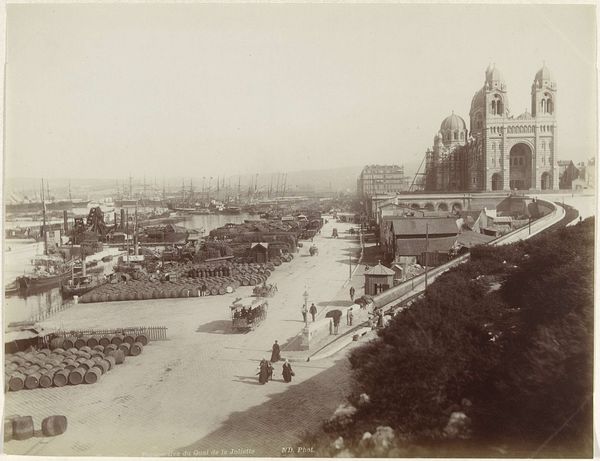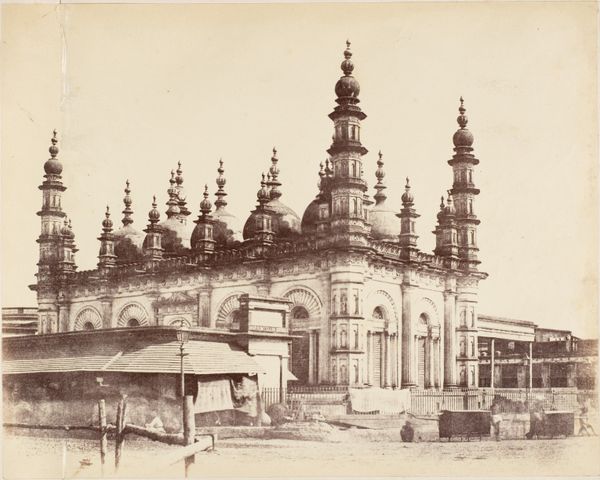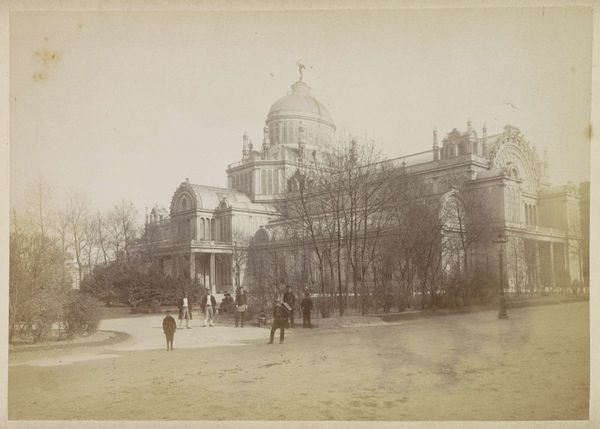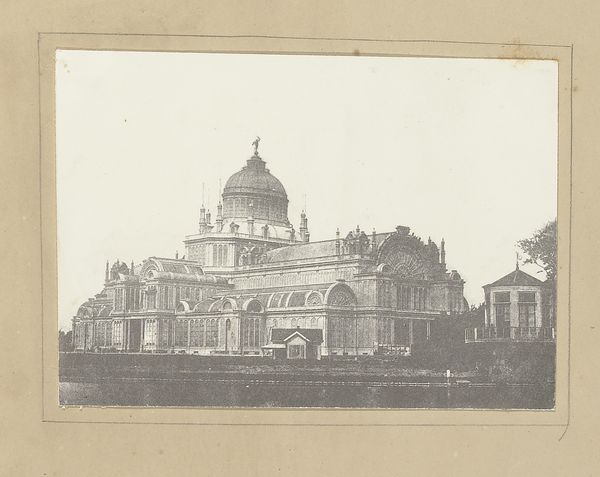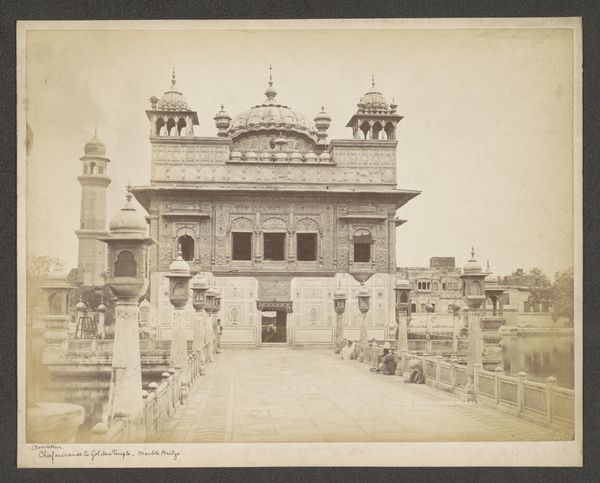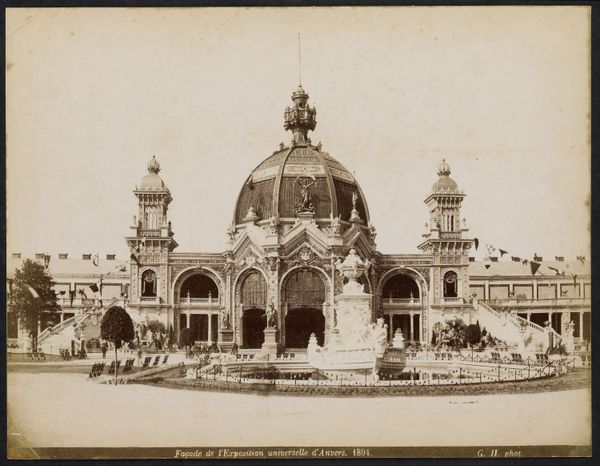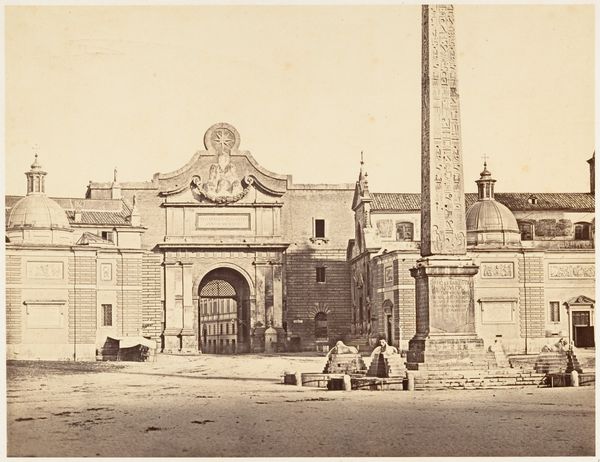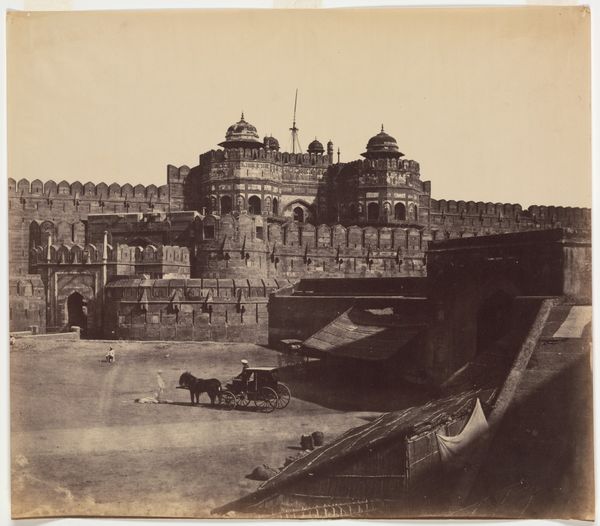
print, photography, architecture
# print
#
photography
#
cityscape
#
architecture
Dimensions: height 178 mm, width 298 mm, height 308 mm, width 468 mm
Copyright: Rijks Museum: Open Domain
Editor: This is "Paleis voor Volksvlijt, Amsterdam," taken in 1869 by Wegner & Mottu. It’s a photograph of a grand exhibition palace, made from a print, I think. The architecture is beautiful but also kind of imposing. What’s your interpretation of this work? Curator: The imposing nature of the building, rendered in this sepia tone, speaks volumes about the 19th century. These grand structures were meant to showcase industrial progress and colonial power. The 'Palace of Popular Industry’ becomes a stage, doesn't it, where class divisions are starkly present - observe the solitary figure dwarfed by its magnitude? Editor: I hadn't considered the solitary figure as a statement on class. What else does the architectural style suggest about societal values at the time? Curator: Consider the extensive use of glass and iron. They are not merely aesthetic choices but represent the advancements achieved through extractive industrial labor, directly influenced by resources acquired in the colonial project. The architecture, in essence, celebrates a narrative of progress inseparable from histories of exploitation. Does this align with your understanding? Editor: I see what you mean. So it’s not just a beautiful building; it's tied to complex, and often troubling, historical and social narratives. Curator: Exactly! Examining art through this lens invites us to reflect critically on the stories that architecture tells and, more importantly, those that it often obscures. What does this revised interpretation leave you with? Editor: I realize how crucial it is to look beyond the surface beauty of art and understand its socio-political implications. Thank you for this eye-opening perspective. Curator: And thank you for your insights – it's through conversations like this that art history remains dynamic and relevant!
Comments
No comments
Be the first to comment and join the conversation on the ultimate creative platform.
